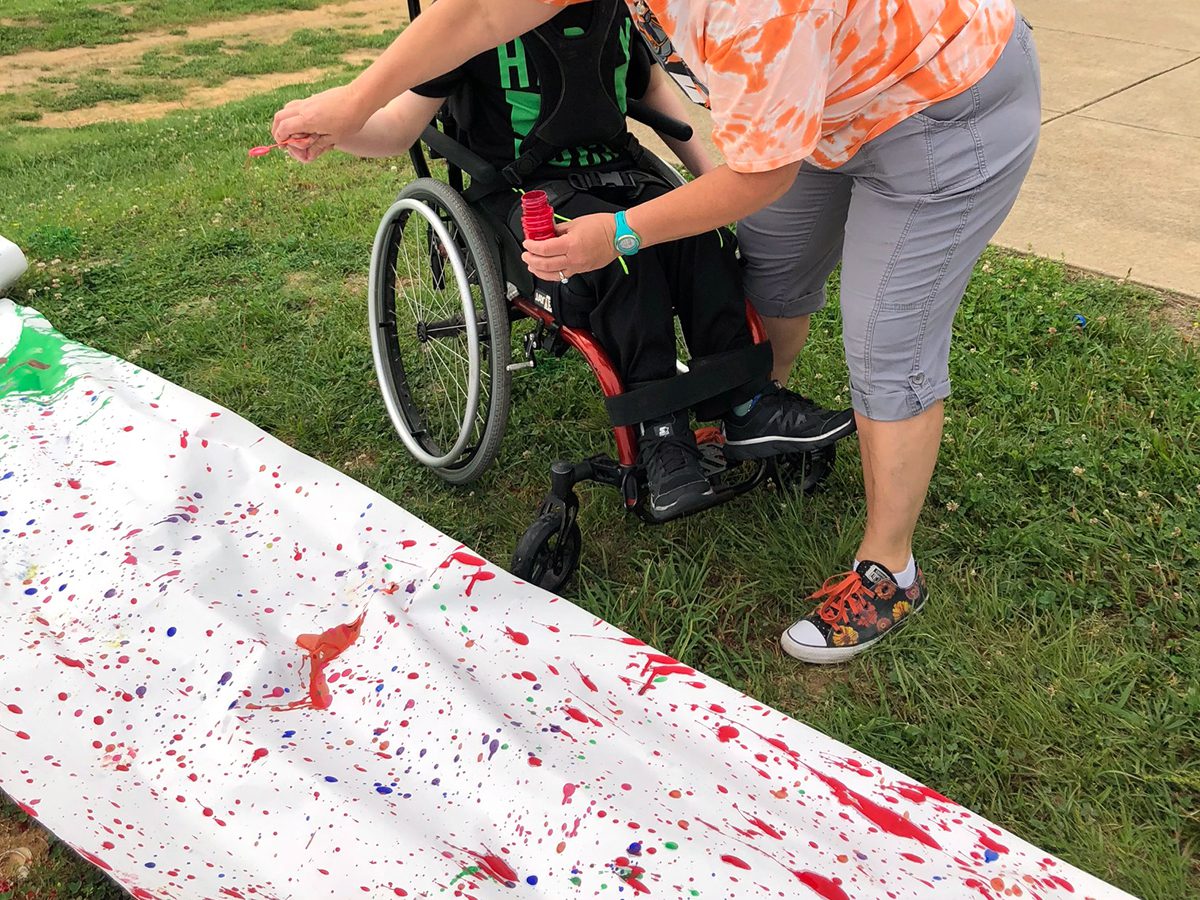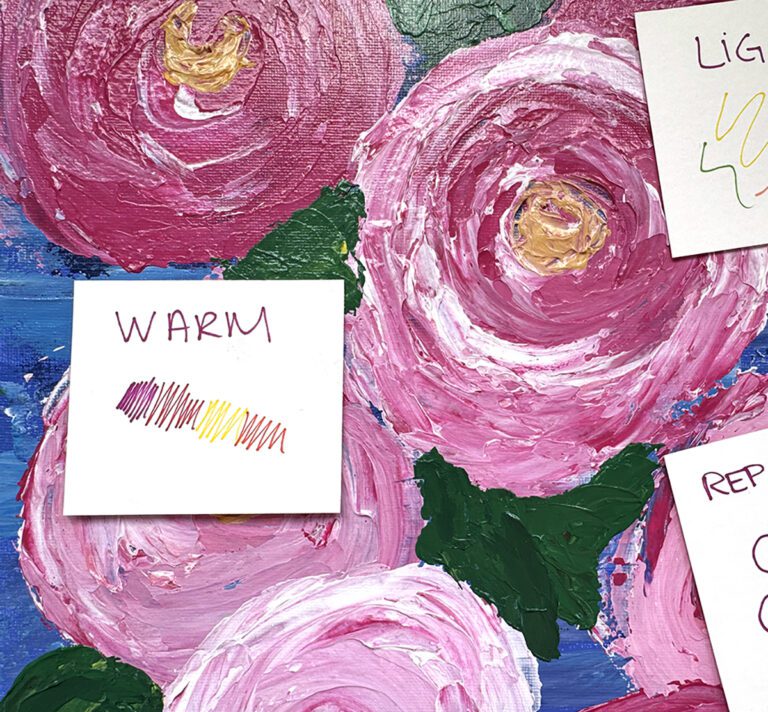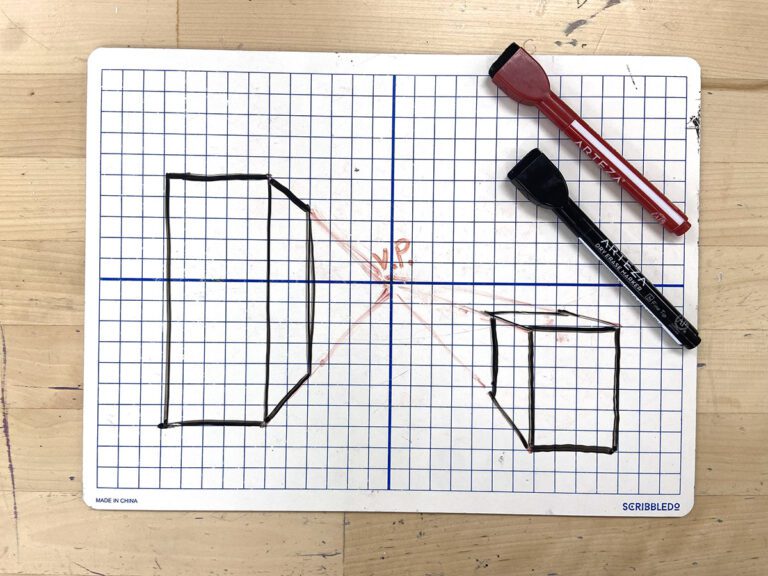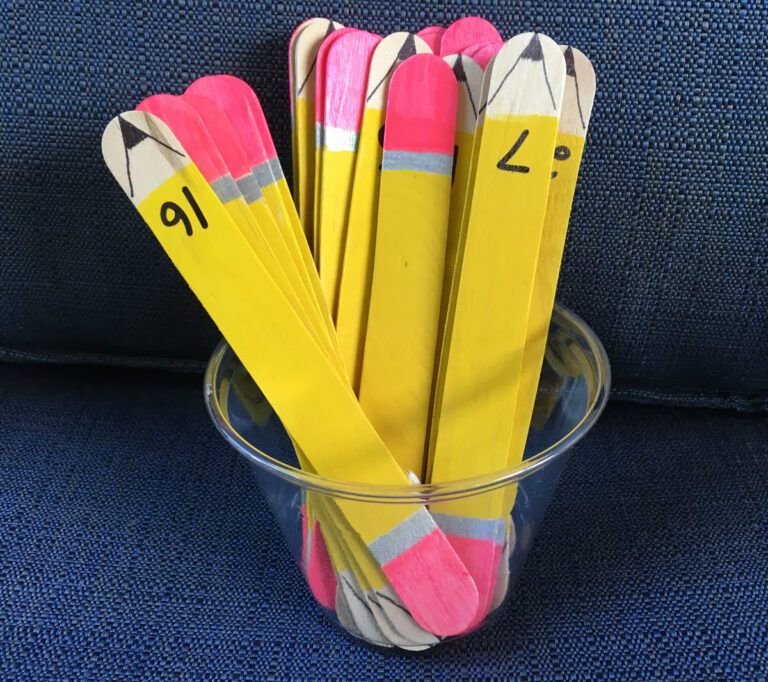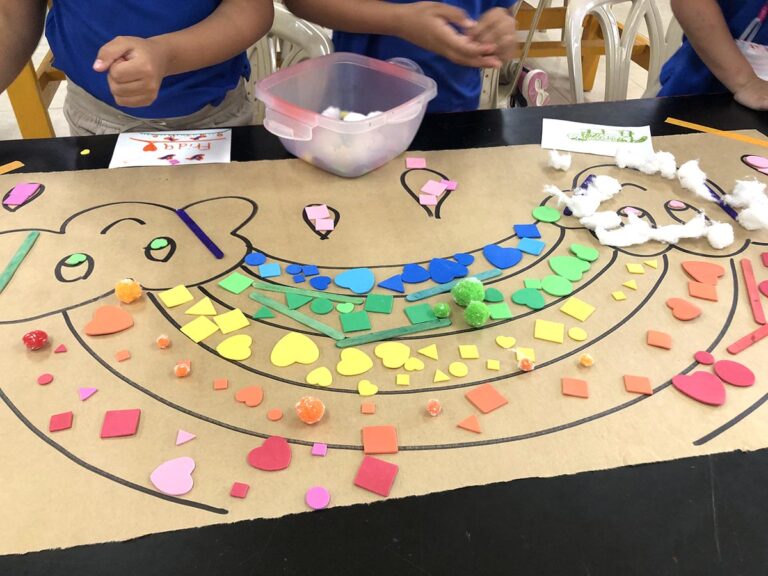Note: This article will use People First Language since we do not know the reader’s preference.
You have a stack of IEPs and 504 plans archived in your email and you’re not quite sure what to do with them. What exactly are they? What do they mean for you, the art teacher, in the art room? You may have these questions and more swirling in your brain. If so, know you’re not alone! The realm of adaptive art can be very confusing.
Keep reading to understand the basics of adaptive art and learn new ways to approach your art room and curriculum to meet the needs of all students.
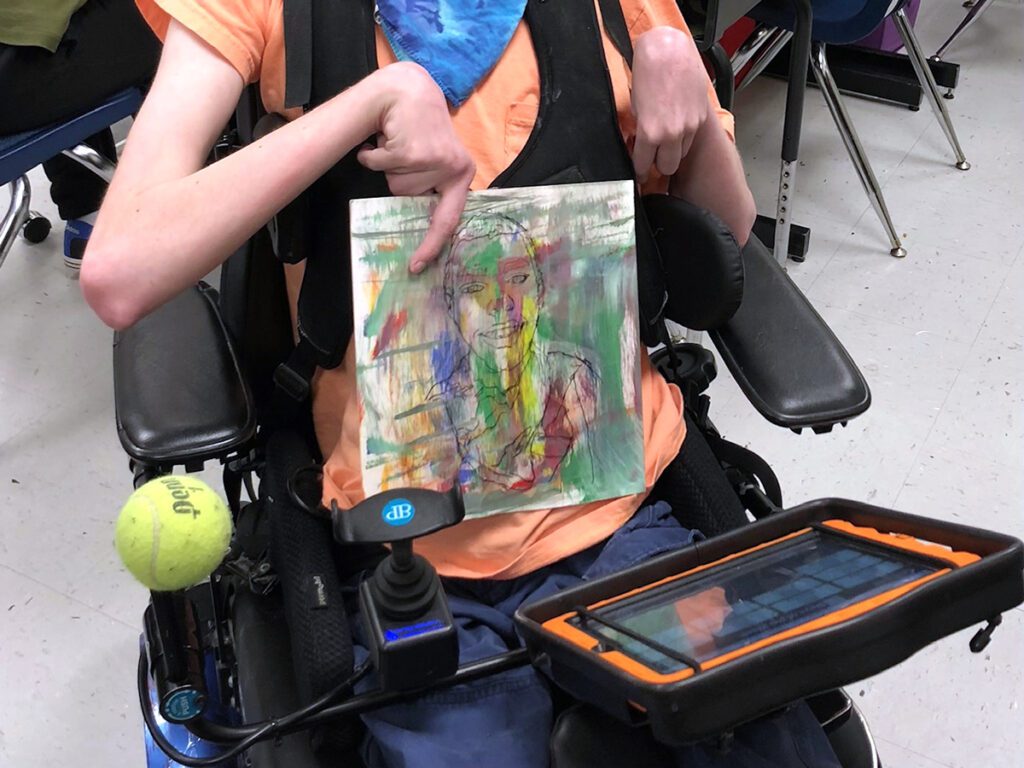
Adaptive art is the practice of making meaningful art with students with cognitive, intellectual, and physical disabilities. This often includes using adapted materials and art tools, adapting lesson plans and/or delivery, and working with paraprofessionals in the art room. The goal is to make sure every student can be successful, no matter their art experience level.
To begin, let’s cover some foundational keywords to ensure we’re all on the same page:
- Individual Education Plan (IEP)
A document crafted by a team of stakeholders that addresses the specific needs of a student with a disability so they can succeed. This document includes strategies teachers will implement to adapt the instruction, content, and environment. - 504 Plan
A 504 plan offers specific accommodations or services to students with disabilities who may not require a special classroom setting for their day-to-day education but would still benefit from extra support. - Least Restrictive Environment (LRE)
This refers to a principle in the Individuals with Disabilities Act (IDEA) that states that children with disabilities have access to education with their peers as much as possible. It looks different for each student, but the idea is to make sure each student is able to thrive in an environment that has the fewest limitations possible. - Hand Over Hand (HOH)
This is a practice to help students who need physical assistance to hold or maintain hold with a variety of art supplies. It can be your hand on top of the student’s hand or the student’s hand on top of your hand. A variation is when the student just needs some light elbow support to maintain a lifted arm. - Differentiate, Adapt, Modify, and Accommodate
These words all refer to changing different pieces of your lesson, delivery system, philosophy, and materials to fit the individual needs of students. Differentiating a lesson proactively considers students’ varying interests, levels, and learning styles. Adaptations are further measures of support and include modifications and accommodations. Modifications are changes to the instruction or content, whereas accommodations are changes to the classroom environment and setup. - Paraprofessionals
Also known as teacher assistants, instructional aides, or TAs, they play a vital role in the day-to-day running of a special education classroom. They assist the lead teacher in instructional support and organization and can be a huge help with general supervision and behavior management. - One-on-One (1:1) Aide
This is an adult assigned to one specific student. They are typically paired with a student who needs more assistance. - Inclusion
Inclusion brings special education and general education students together in the same room for the same class. This approach aims to consider the needs of all students from the start. It’s important for social skills, peer relationships, and community building within schools. - Self-Contained Art
This is an art class that consists of students solely from a special education setting.
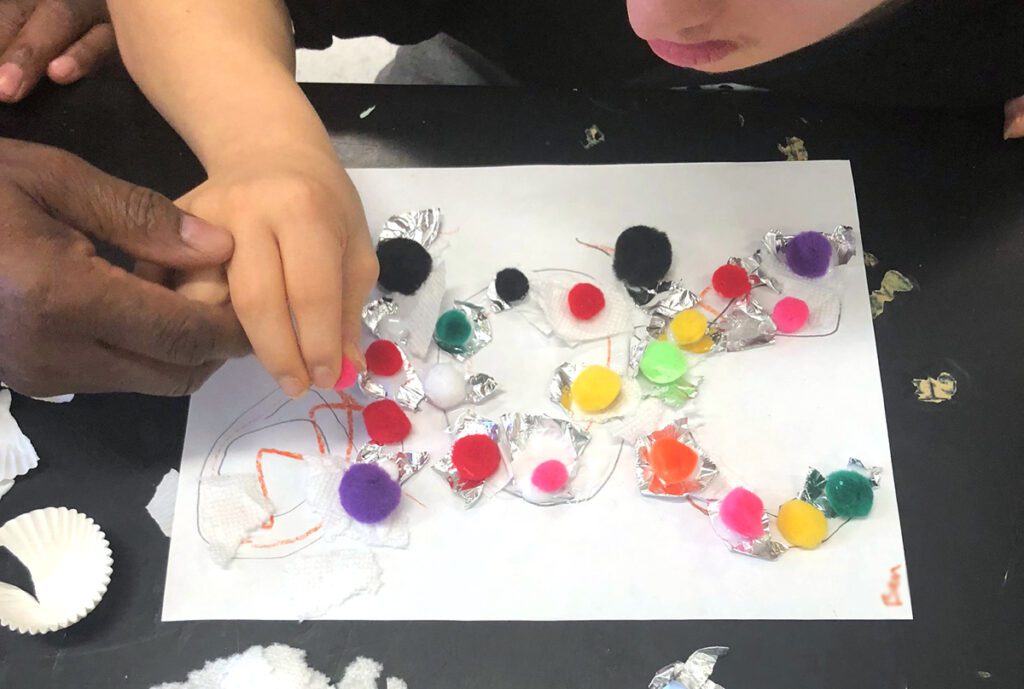
What does adaptive art look like in practice?
Adaptive art courses are becoming increasingly popular in many schools. You may be teaching one for the first time this year! Alternatively, you may wonder how to incorporate adaptive art practices into your existing art courses and classroom. Whichever route you are on, adapting your art room and curriculum doesn’t have to be complicated or consist of huge sweeping changes. Sometimes, the little things can make the biggest difference!
Get to know your students.
Start with a student-centered approach. Art teachers know first-hand that the best way to get to know a student is to spend time with them building rapport. The key to having a quicker and deeper understanding of your students in special education programs is to also cultivate a relationship with their special education team. This can include their homeroom special education teachers, paraprofessionals, and parents, guardians, or caretakers. These adults spend the most time with these students and can be an invaluable resource when it comes to interests, struggles, wins, and behavioral triggers. Make these perspectives a priority!
Make an early finisher station.
Consider creating an early finisher station in your classroom. Students can choose an activity from different bins when their work is complete or if they need a break. Sensory bins are always a win for all grade levels! Have a plastic tub with colored rice or water beads or a box with various types of paper for tearing or hole punching. Ensure your bin is on a low table for all students to access or provide smaller bins that students can bring back to their tables. Building blocks, plastic building bricks, and magnetic tiles are also great options that are tactile, strengthen fine motor skills and hand strength, and encourage students to be design-minded.
Create open spaces in your classroom.
It’s a good idea to consider your room setup for all students who may come through your door. Your setup may need to be flexible so students in wheelchairs can access everything. Create open spaces in the room so there are a lot of pathways to move around, as well as open spaces on countertops or tabletops for students to spread out and work on. Many students with wheelchairs have attachable work trays. Reach out to their homeroom teacher to see if they can bring their trays to art class with them.
Visit these students in their homeroom classroom to see what it looks like. Observe what works and think about how you can implement a similar setup in your space. Go one step further and invite the homeroom teacher to come to your studio and provide tweaks you can make to improve the space for all students. Their homeroom teachers will often have awesome ideas because they know these students better than anyone!
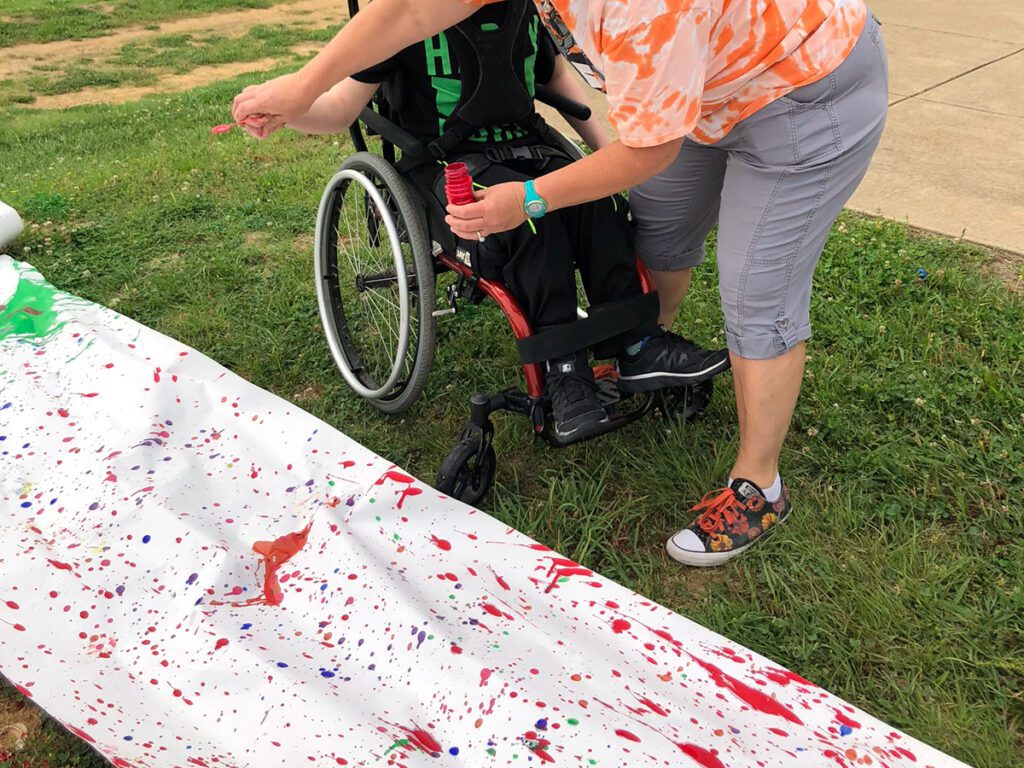
Start with the highest level of modifications.
Instead of pulling modifications from IEPs and 504 plans and trying to make adjustments for each individual student, start by finding the highest level of modification needed in the class. This approach ensures you are meeting the needs of all students without re-writing your lesson plans multiple times. Students who need more of a challenge will often rise to the occasion. Plus, the rest of the class will never know who the original modifications are for so students won’t feel singled out.
Collect adaptive art materials and tools.
Once you have an understanding of student skill sets and levels, you can begin to collect adaptive materials and supplies. While there are many helpful specialized items out on the market, you don’t need anything expensive or fancy to support students. There are many cheap or free hacks and budget-friendly options. Get started with grips, adaptive scissors and paintbrushes, and button-adapted tools. These are all great for students with low muscle tone or limited movement.
Focus on the process.
While completed artworks are important, the artistic process is where so much learning, discovery, and reflection happens! Lean into the process and allow your students time to delight in artmaking—let them experiment with materials, play with tools, and enjoy art through a sensory lens. This may be a student’s first opportunity to take an art class and we want them to fall in love with visual art for the long haul!
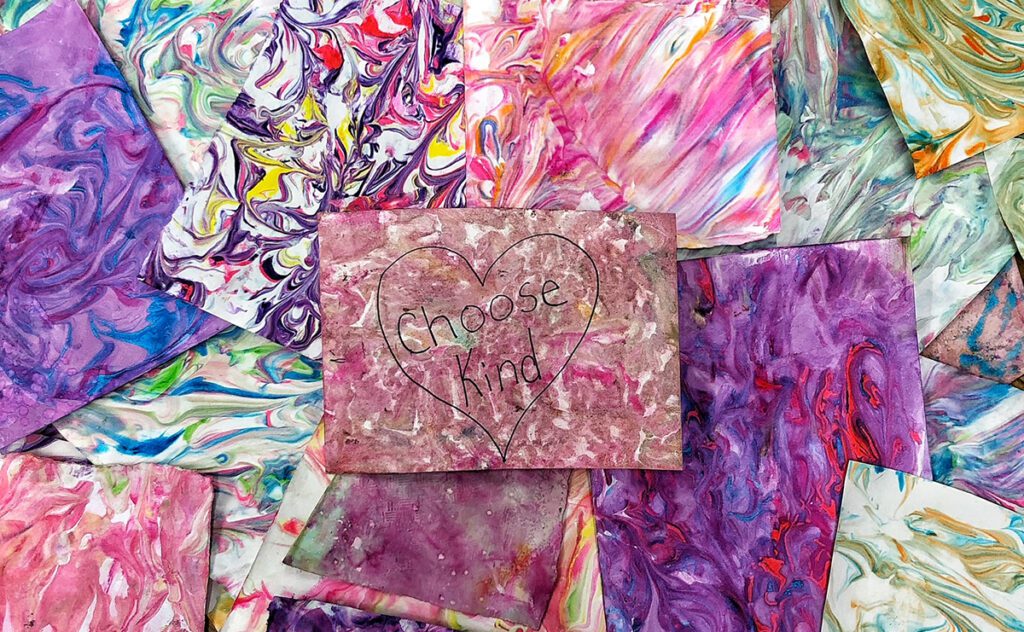
Whether you are teaching an adaptive art course or incorporating adaptive art strategies into your art room and curriculum, your perspective is vital. The way you approach bringing art education and visual arts to your students is just as important as the special tools or fun art materials. The priority is to provide avenues for all students to experience art through age-appropriate and challenging lessons, explore art tools and materials, and engage in the artistic process. Celebrate all of the art opportunities you bring to your students, especially those with a disability. Remember, all art is magic, but adaptive art is a unique opportunity to equip students with new and creative ways to express themselves!
Share one thing you’ve learned from teaching adaptive art.
How do you meet the unique needs of all of your students each class period?
Which adaptive art strategy are you looking forward to trying this year?
To continue the conversation, join us in The Art of Ed Community!
Magazine articles and podcasts are opinions of professional education contributors and do not necessarily represent the position of the Art of Education University (AOEU) or its academic offerings. Contributors use terms in the way they are most often talked about in the scope of their educational experiences.
